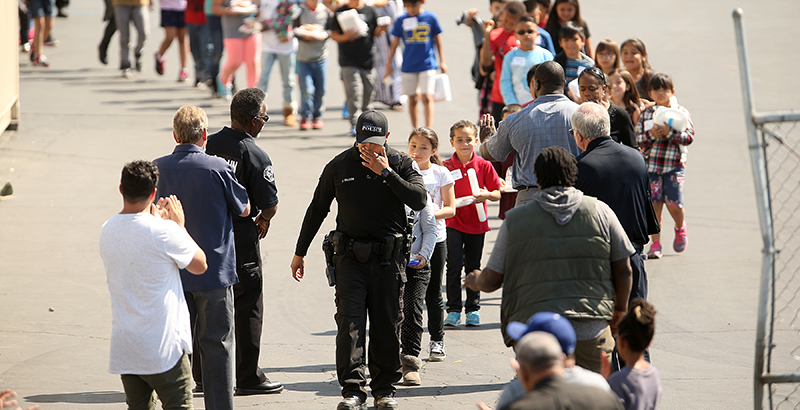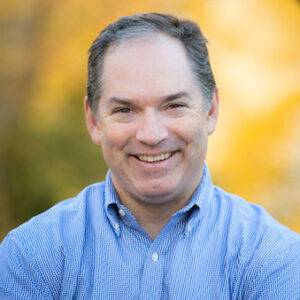Rotherham: School Shootings Are Rare. We Need to Dial Back the Fear So Students Can Engage on the Issue of Guns in Society

Gun violence is a real problem in American society at large and in our schools. Even in the context of the hundreds of millions of students who have passed through our schools since 1999, most people would agree that more than 200 deaths from gunfire in American schools since Columbine is unacceptable.
For parents, school shootings are especially terrifying and play to our most basic fears about our children. But hard as it may be, given the emotions bound up in an issue like this, our desire to do something about school shootings must be balanced with other imperatives. First, we’re talking about and with young people, and we should endeavor not to make them needlessly fearful. And second, while indescribably horrific, school shootings and especially mass shootings are very low-probability events. That’s not an argument for doing nothing. It’s an argument for appropriately calibrating our response where kids are concerned. And right now, we’re not.
The latest evidence? A Pew Research survey of American teenagers and their parents released late last month. Not surprisingly, the survey found that in the wake of school-sponsored protests and walkouts, constant media saturation, and ubiquitous active shooter and lockdown drills, kids are awfully anxious about being shot in their classrooms. Overall, 57 percent of teens said they are “very worried” or “somewhat worried” about a shooting at their school. Parents also expressed high levels of concern about school shootings.
Here’s the thing: It’s really not all that comforting to think about, but the reality is that all manner of horrible things are more likely — in many cases, substantially more likely — to befall kids than being shot in school. Car accidents, bike accidents, and drowning are among the preventable causes of death much more likely to claim a child than a shooting in school. Cancer is a far greater killer. Suicide, a silent crisis that is now the second leading cause of death for teens, claims thousands of young lives each year, especially among vulnerable populations such as gay or transgender students.
To give an idea of how rare school shootings are in a country with more than 55 million school-age children, consider that girls are much more likely to be child brides than be shot in school. When did you last worry about that, let alone protest the arcane laws that allow it? The Pew survey, though, found that more than 1 in 4 teen girls are very worried about a shooting at their school (an additional 35 percent said they were somewhat worried).
This level of anxiety is not welcome civic engagement. Students can be engaged on the gun issue without being scared. Anxiety is not something to be encouraged in young people, or even quietly tolerated. Rather, it’s something responsible adults tamp down — in this case, by helping students understand that while gun violence is a problem, gun violence in schools is less so. It’s a teachable moment about race, class, and complicated public policy problems.
Yet instead of calming students or helping them understand the situation, too many people are playing to their fears. Some schools are talking about arming teachers with buckets of rocks or bats, or with guns. Here in the education world, it’s hard to miss the perverse irony that some of the very same people who could not stop talking about how academic standards and tests traumatize kids seem to think nothing of scaring young people about their lives being at risk in school.
To some extent, the kids seem to know something about what’s going on. Black and Hispanic teens are more likely to express concern about gun violence than white students — a fear backed up by the data. Black youth, for instance, are 10 times as likely to be killed by firearm violence as white students. Low-income parents indicated greater levels of concern than higher-income families, and the data support that, too. We should get more serious about addressing those problems, but we should not conflate gun violence overall with gun violence in schools — where, again, it is thankfully rare. In fact, for many children, school is the safest place they are all day.
The political agenda that has teens and their parents so worried is obvious: Get everyone spun up about this issue and get legislation passed, either directly or by electing politicians more open to some straightforward gun safety measures than many incumbents. A worthy political goal, sure, and we should not become resigned to any level of violence in schools or the gun-fueled carnage that is routine in too many communities.
But we might ask whether political mobilization based on creating fear in America’s kids is really the way to accomplish it. In the near term, as Pew found, it’s making young people needlessly anxious at a time too many are struggling with stress and anxiety anyway. In the longer run, it might be the kind of thing that sours their parents on gun politics.
Andrew J. Rotherham is a co-founder and partner at Bellwether Education and a senior editor at The 74, and serves on The 74’s board of directors.
Get stories like these delivered straight to your inbox. Sign up for The 74 Newsletter

;)
